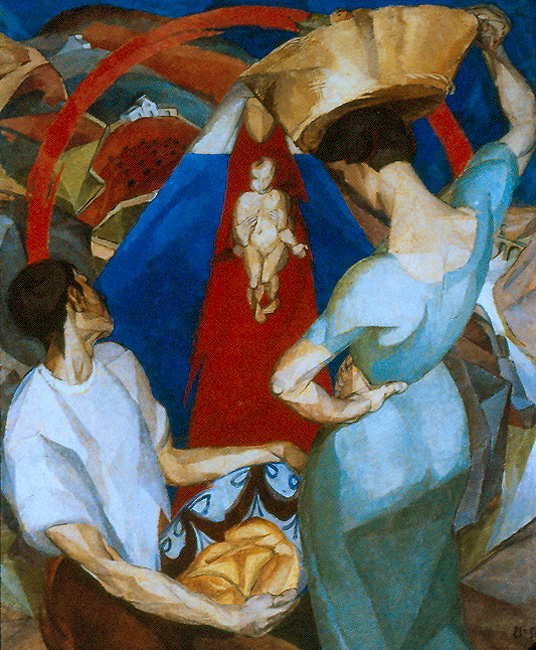
Diego Rivera (4) |
 |
|---|
Source: WTL research files. Painting: "Adoration of the Virgin and Child" (1913), painted in Toledo, Spain. Comments: Diego Rivera arrived in Paris in 1909, where he lived in the Quartier Latin and where he plunged into the Parisian art life in Montparnasse and along the Seine River. From 1909 through 1913, he traveled, more or less in order, to Bruges, London, Paris, Madrid, Mexico City, Madrid again, Toledo, and Paris once again. In 1912, his works begin to show the influence of Cubism, and in 1913, as you see in this painting, he works within Cubism, Simultanism (Robert Delaunay) and the style of Cézanne. Since Rivera studied El Greco's paintings in Toledo, it appears that Rivera is fusing what he learned from El Greco with Cubist techniques and concepts. By the end of 1913, Rivera adds some elements of Futurism to his works. Note: This painting is displayed in both the series on Diego Rivera and the Mexican modern art series on "Paint the Revolution." Link back to 2016 pages from the exhibition on Mexican Modern Art 1910-50: => Mexican Modern Art #7. Humanities Question: Write a brief statement in which you justify discussing this painting in both textbook locations. |
|---|
 |